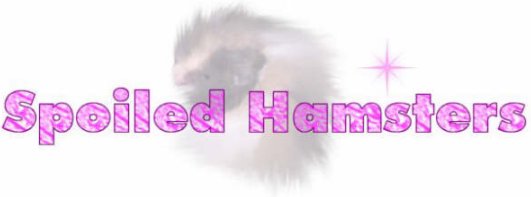 |
 |
 |
 |
 |
 |
 |
 |
 |
 |
 |
 |
 |
 |
 |
 |
 |
 |
 |
 |
 |
 |
 |
 |
 |
 |
 |
 |
 |
 |
 |
 |
 |
 |
 |
 |
 |
|
|
 |
|
|
|
Proper Nesting Material for Hamsters |
|
|
|
In the wild, hamsters ran for several miles/hours each night of their lives, looking for food and nesting materials. Nesting materials often included twigs, leaves, small sticks, and moss.
In several months of trying to find the best nesting materials for my little guys, here are my observations: |
|
|
|
Please do NOT give your hamster: |
|
|
 |
|
|
Cedar or pine shavings: Both contain toxic oils/fumes that can cause serious respiratory problems for hamsters and humans alike. Also, I have personally witnessed severe skin irritation and fur loss with several hamsters using pine bedding.
If you are using pine/cedar and are not noticing these symptoms, I still strongly recommend using more suitable bedding. But, if you ARE noticing illness/irritation to your hamster, please change the bedding IMMEDIATELY! Also, skin healing will come faster if you will provide your hamster a sand bath -either children's play sand, or chinchilla SAND- NOT chinchilla dust!- to wash away the oils from the wood.
|
|
|
|
|
|
Soft/Fluff bedding: Some pet stores sell this bedding, claiming that it is safe bedding material- IT IS NOT!!! Not only can it can become lodged and possibly choke your hamster, it has also been known to block a hamster's intestinal tract (accidentally swallowed) and has caused death!. Besides- where would hamsters have found fluff bedding in the wild? |
|
|
 |
|
|
|
|
|
|
Instead of those listed above, please DO give your hamster: |
|
|
|
Carefresh (or it's less expensive Walmart alternative, "Crittercare") Carefresh is the safest- made of plain, harmless, recycled paper. It is simply the best and safest bedding you can provide for your hamster. |
|
|
 |
|
|
|
|
|
|
White, unscented toilet paper: Also very safe for hamsters. I would NOT use this as primary bedding unless you are short on money or are doing an emergency change from pine or cedar. While the toilet paper is safe, it is not absorbent enough to be used as a primary bedding, unless you plan to clean the cage every day.
White tissue paper is among almost every hamster's favorite NESTING material, and replaces the MOSS the hamster would have found in the wild. Drop some squares of it into your hamster's house and before the night is over, he will have made a very soft nest in his favorite sleeping spot! |
|
|
 |
|
|
|
|
|
|
Timothy Hay: Another great source of nesting material. As far as primary bedding, I have successfully used it in one area/room of Ziggy's house, (but not for the entire house because it is not absorbent). It's not only good for nesting, but also healthy for him to snack/chew on.
Timothy hay replaces the weeds and twigs he would have gathered in the wild for nesting. |
|
|
 |
|
|
|
|
|
|
Aspen bedding UPDATE: Aspen is generally considered safe for most hamsters, but new evidence is raising a question about it now. After viewing the following article, (provided by the California Hamster Association) you will need to decide whether or not your hamster has been affected by aspen bedding. Click: Is Aspen Safe?
The only reccomendation I would make is that you remove you hamster from his house for at least 30 minutes or more during "house cleaning" to allow the aspen shavings to vent. (Aspen is usually sold in air-tight packaging, and needs time to breathe in open air after removal from package.)
If you find that aspen is safe for your hamster, it is generally used as a primary bedding-- and is a wonderful replacement for the dry ground/dirt your ham would have hung out in most of his nights in the wild, because it is absorbent of urine and odors that your hamster would have normally left on the ground for "Nature" to absorb. |
|
|
 |
|
|
|
|
|
|
Back to "Before you Bring Your Hamster Home" |
|
|
|
|
|
|
|
Back to "The Transfer" |
|
|
|
|
|
Back to "A Hamster's TRUE Basic Needs" |
|
|
|
|
|
HOME |
|
|
|
|
|
Enter the Forum |
|
|
|
|
|
SH Logo Copyright © 2005 Putter Smith |
|
|
|


